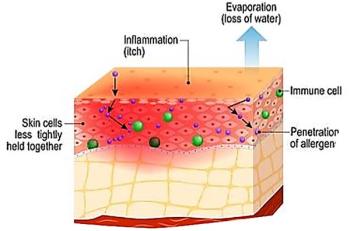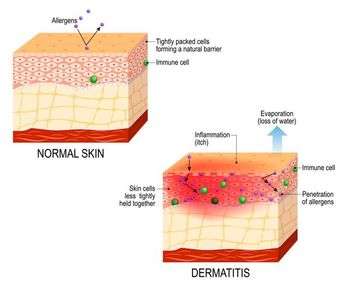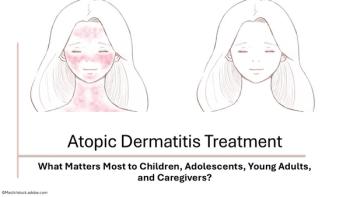
Monitoring Glucocorticoid Therapy in CAH: Timing, Timing, Timing
Clinical guideline recommendations for optimal timing to gauge glucocorticoid treatment effects in congenital adrenal hyperplasia require individualization. Here's why.
Monitoring the response to glucocorticoid (GC) treatment of 21-hydroxylase deficiency (21OHD) congenital adrenal hyperplasia (CAH) in adults is a task that needs to accommodate the potential for variability of all the relevant factors, including the present physiology of the individual undergoing surveillance, the timing, dose, and pharmacokinetics (PK) of the chosen GC therapy, the time of day, laboratory and assay used, and the specific biomarkers used to evaluate treatment.
The goal of treatment for adults with CAH is twofold: to replace deficient GCs and in some cases mineralocorticoids and to reduce adrenal androgen excess.1-7 The challenge to achieve these ends without causing iatrogenic Cushing syndrome and treatment-related adverse health outcomes2,4,5,8 is longstanding. Physiologic doses of GCs are typically sufficient to manage the inherent cortisol deficiency in the condition. However, regulation of adrenal androgen production most often requires supraphysiologic GC doses to compensate for the inability of current treatments to mimic the circadian pulsatility of endogenous cortisol production. 4,9 10, 11 Current daily GC treatments are associated with peak concentrations that decline rapidly to nearly nondetectable levels, leaving individuals exposed to intermittent androgen overproduction and vulnerable to the long-term health consequences of high-dose GCs. 2,4 5,8,9
The Biomarkers
The traditional biomarkers used for monitoring GC efficacy and adjusting treatment are the adrenal androgen precursors 17-hydroxyprogesterone (17-OHP ) and androstenedione (A4).2 The 2 hormones have their own variability, following a circadian rhythm of elevation and trough and are acutely increased by stress and significantly decreased after GC dosing.4,9,13, 14 Elevations of A4 in individuals with untreated CAH are often 5- to 10-fold above recommended levels. Clinical guidelines provide established age-, sex-, and Tanner stage-specific reference ranges to help gauge A4 response to GC therapy.2 Assessment of effect based on 17OHP level is not as straightforward.
The immediate downstream position of 17OHP before the 21-hydroxylation reaction makes it a key biomarker to monitor disease activity.2, 4,5, 8,9 A basal or stimulated 17OHP level of more than 1000 ng/dL is traditionally diagnostic of 21OH CAH. 2 Levels in classic CAH are typically 10 to 100 times higher than that. 2,6 For purposes of monitoring treatment response, a serum level of 17OHP of 1200 ng/dL is often used as the upper limit of an acceptable range given evidence that suppression of the biomarker to “normal” may be indicative of GC overtreatment.2,9 So, while low levels indicate minimal “flux” to adrenocorticoids, “modest accumulation of 17OHP is not necessarily deleterious.”2,6,9
"4.17 In adults with congenital adrenal hyperplasia, we recommend that clinicians do not completely suppress endogenous adrenal steroid secretion to prevent adverse effects of over treatment."
(1|⊕⊕⊕○)2
Other than recommending avoidance of complete suppression of 17OHP, however, clinical guidelines for CAH do not provide specific reference ranges or guidance on optimal timing for blood draws.2,9,13 The overall guidance from the Endocrine Society is to maintain androstenedione concentrations within the normal range and 17OHP within the upper limit of normal.2 For timing, the guidance is to ensure that assessments take place at consistent times and intervals and with close attention to scheduled medication administration.2
When, How to Measure GC Effect
Optimal timing for assessing treatment effect in individuals with CAH is mediated by variability in the biomarkers and in GC pharmacokinetics (PK). The significant within-individual diurnal variations observed with cortisol in people with CAH are seen also for levels of 17OHP and A4.4,9,13,14 Peak levels of the biomarkers occur at approximately 7:00 am and they reach a nadir between 1:00 and 3:00 am.14 In children, a morning dose of hydrocortisone leads to a drop of 90% in the predose concentration of 17OHP within 3 hours after administration and a drop in A4 of 70% within 4 hours.13,14 In adults with CAH, research by Debono et al13 demonstrated that the time to minimum levels of adrenocortical markers varies with PK of the GC preparation. Trough concentrations have been observed 4 to 5 hours after a dose of prednisone and 10 hours after a dose of dexamethasone.13,14 In children and adults taking hydrocortisone, a primary strategy used to guide titration of dose is measuring 17OHP and A4 before the early morning dose to capture peak hormone levels.13 For the two-thirds of adults with CAH who use them, there are no definitive criteria to support timing of testing in relation to dose with intermediate- and long-acting GCs.2,9,13
"4.16 In adults with congenital adrenal hyperplasia, we recommend monitoring treatment through consistently timed hormone measurements relative to medication schedule and time of day."
(1|⊕⊕○○)2
DeBono et al13 describe their study as the most “detailed to date” to evaluate optimal monitoring times for patients on intermediate and long-acting GCs.13 After tracking hormonal circadian rhythms, researchers used 24-hour serial sampling to estimate the “optimal monitoring time ranges for identifying hormonal suppression and escape from hormonal control.” Overall disease control was assessed using A4 within the normal range.13
Hormonal exposure was higher in the morning and early afternoon followed by decreasing levels. The PK modeling showed for study participants on morning and evening prednisone, maximal hormone concentration levels occurred approximately 10 hours post-dose and lowest levels approximately 4 to 5 hours following a dose. Timing for measurement of peak 17OHP and A4 corresponded best to 9.7 hours post-morning prednisone dose and similarly 10.3 hours after the evening dose. The best correspondence for timing to monitor hormonal suppression was 4.3 and 4.5 hours post morning and evening prednisone dose, respectively, according to the researchers.13
When they analyzed the data for once-daily dexamethasone, Debono and colleagues found the timing for measurement of A4 and 17OHP corresponded with 9.2 hours and 16.4 hours post-dose for minimum and maximum hormonal suppression, respectively.13 The study authors reported significant differences between highest and lowest levels of 17OHP and A4, underscoring the crucial importance of timing for hormonal evaluation.
“Our opinion is that aiming to measure maximal hormone levels is most useful in clinical management, corresponding to evaluation in the early morning for nighttime prednisone, or late afternoon for morning prednisone or nighttime dexamethasone,” authors concluded.13
In addition to intraindividual variability in biomarker levels over a 24-hour period and in relation to treatment administration, analysis of data from the International Congenital Adrenal Hyperplasia Registry showed large variability in values for 17OHP and androstenedione levels between clinical centers.15 Lawrence et al suggested that use of a variety of assays, variable timing of appointments and blood tests, in addition to center-specific biomarker target ranges may have led to some of the variation among locations. Further analysis however led them to conclude that varying levels of serum biomarkers and GC doses are the result of significant practice variation between centers.15
Summary of Thoughts
In a recent invited review for Clinical Endocrinology, Bacila et al14 concluded that the evidence for use of a variety of biomarkers to assess CAH control is diverse, making it difficult to translate into clinical practice. The authors summarized their conclusions in these key messages14:
- There is an urgent need for data on the superiority of a specific monitoring strategy as it relates to clinical outcomes in CAH.
- Hormone replacement therapy should follow a patient-specific approach, ideally based on 24-hour hormonal profile in relation to medication dosing.
- The reliability of one-time measures of biomarkers is low when assessing disease control, particularly if taken at any time other than in the morning before the first GC dose.
- There are inherent limitations to use of 17OHP, A4 and other biomarkers to assess therapeutic response; additional research is needed into more disease-specific markers.
- Monitoring disease control using salivary and urinary steroid measurements is increasingly viable and warrants consideration.
Most importantly when it comes to monitoring the response to GC therapy and decisions to alter dose, guidance echoed throughout the literature both current and past, is that “hormone levels taken at recommended time points should not preclude a full clinical assessment of the patient. Management decisions should take all clinical features and biochemical data into consideration.”13
References
1. Auer MK, Nordenström A, Lajic S, Reisch N. Congenital adrenal hyperplasia. Lancet. 2022;401(10374): 1-18. doi:10.1016/S0140-6736(22)01330-7
2. Speiser PW, Arlt W, Auchus RJ, et al. Congenital adrenal hyperplasia due to steroid 21-hydroxylase deficiency: an Endocrine Society Clinical Practice Guideline. J Clin Endocrinol Metab. 2018;103(11):4043-4088. doi:10.1210/jc.2018-01865
3. Claahsen-van der Grinten HL, Speiser PW, Ahmed SF, et al. Congenital adrenal hyperplasia—current insights in pathophysiology, diagnostics, and management. Endocr Rev. 2022;43(1):91-159. doi:10.1210/endrev/bnab016
4. Mallappa A, Merke DP. Management challenges and therapeutic advances in congenital adrenal hyperplasia. Nat Rev Endocrinol. 2022;18(6):337-352. doi: 10.1038/s41574-022-00655-w
5. Merke DP, Auchus RJ. Congenital adrenal hyperplasia due to 21-hydroxylase deficiency. N Engl J Med. 2020;383(13):1248-1261. doi:10.1056/NEJMra1909786
6. Auchus RJ, Arlt W. Approach to the patient: the adult with congenital adrenal hyperplasia. J Clin Endocrinol Metab. 2013;98:2645-2655. doi:10.1210/jc.2013-1440.
7. Turcu AF, Auchus RJ. Novel treatment strategies in congenital adrenal hyperplasia. Curr Opin Endocrinol Diabetes Obes. 2016;23(3):225-232. doi:10.1097/MED.0000000000000256
8. Auchus RJ. Management of the adult with congenital adrenal hyperplasia. Int J Ped Endocrinol. 2010;1-9. doi:10.1155/2010/614107
9. Sarafolgou K, Merke DP, Reisch N, Claahsen-van der Grinten H, Falhammar H, Auchus RJ. Interpretation of steroid biomarkers in 21-hydroxylase deficiency and their use in disease management. J Clin Endocrinol Metab. 2023;108:2154-2175. doi:10.1210/clinem/dgad134
10. Schröder MAM, Claahsen ‑ van der Grinten HL. Novel treatments for congenital adrenal hyperplasia. Rev Endocr Metab Disor. 2022; 23:631–645. doi:10.1007/s11154-022-09717-w
11. Charoensri S, Auchus RJ. A contemporary approach to the diagnosis and management of adrenal insufficiency. Endocrinol Metab (Seoul). 2024; 39(1): 73–82. doi: 10.3803/EnM.2024.1894
12. Pofi R, Ji X, Krone NP, Tomlinson JW. Long‐term health consequences of congenital adrenal hyperplasia. Clin Endocrinol. 2023;1–15. doi:10.1111/cen.14967
13. Debono M, Mallappa A, Gounden V, et al. Hormonal circadian rhythms in patients with congenital adrenal hyperplasia: identifying optimal monitoring times and novel disease biomarkers. Eur J Endocrinol. 2015 December ; 173(6): 727–737. doi:10.1530/EJE-15-0064.
14. Bacila I-A, Lawrence NR, Badrinath SG, Balagamage C, Krone NP. Biomarkers in congenital adrenal hyperplasia. Clin Endocrinol. 2023;1–11.
15. Lawrence N, Bacila I, Dawson J, et al. Analysis of therapy monitoring in the International Congenital Adrenal Hyperplasia Registry. Clin Endocrinol. 2022;97:551–561. doi:10.1111/cen.14796
Newsletter
Enhance your clinical practice with the Patient Care newsletter, offering the latest evidence-based guidelines, diagnostic insights, and treatment strategies for primary care physicians.




